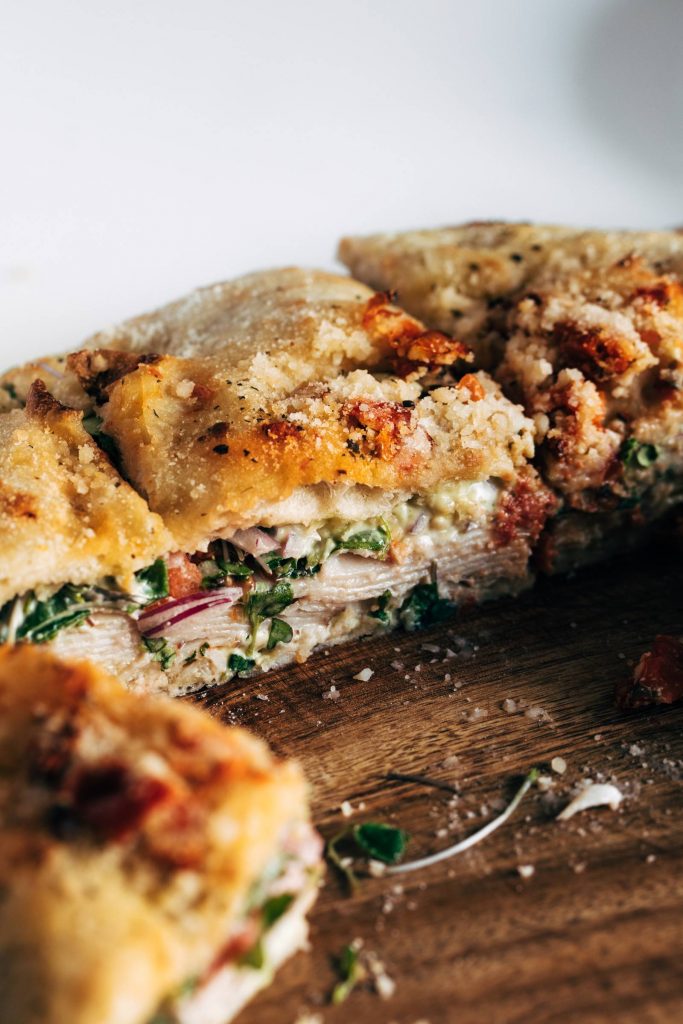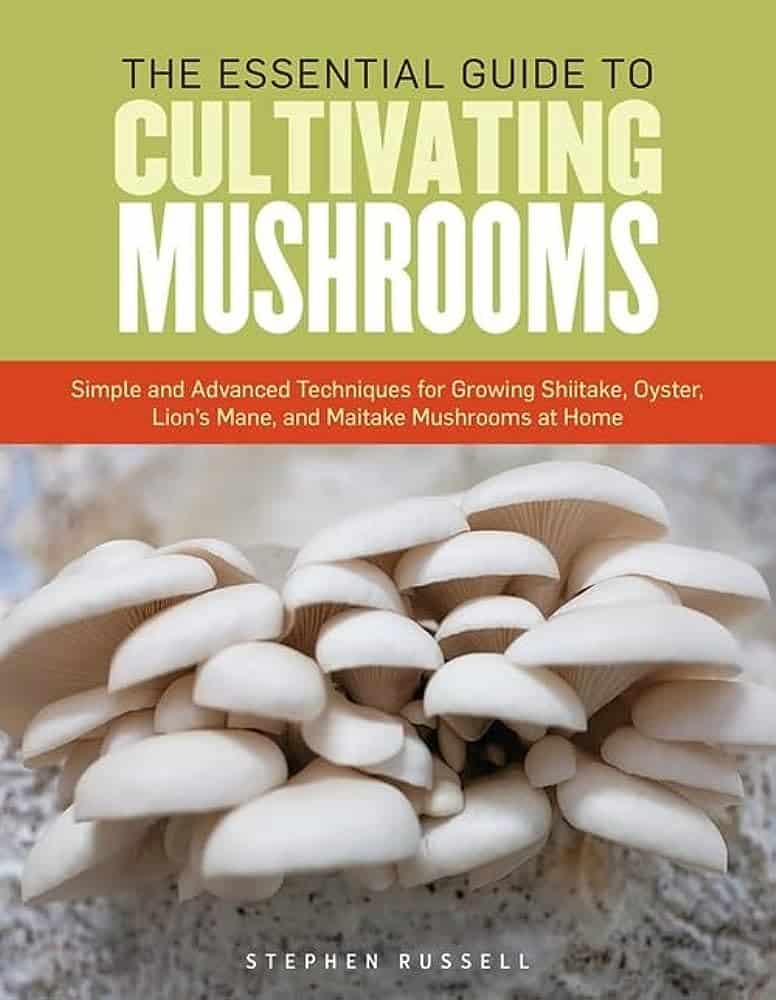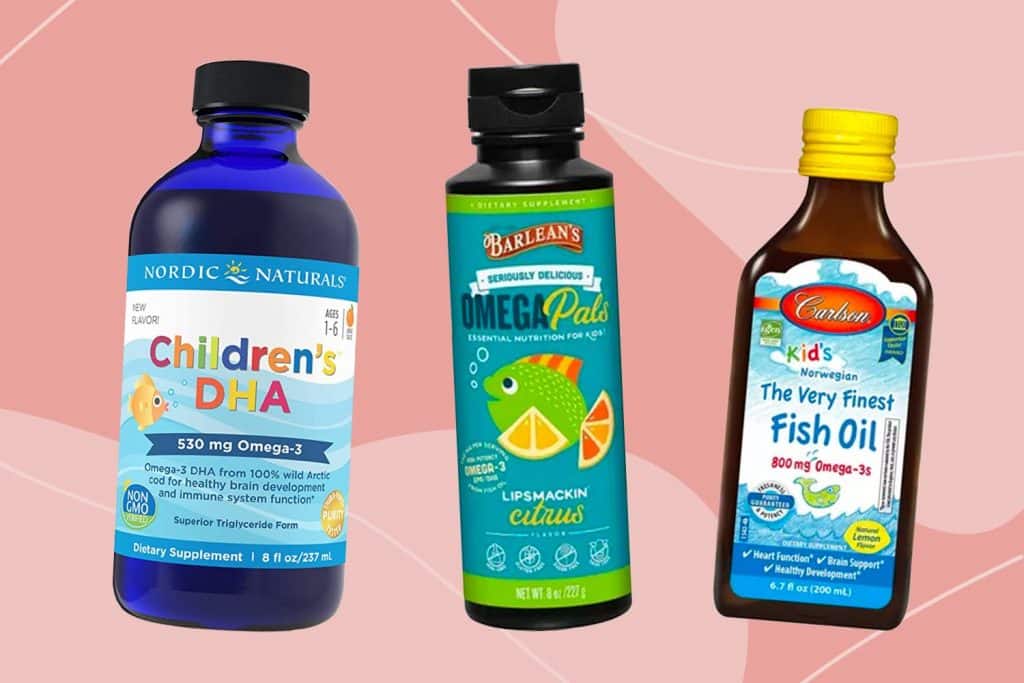Banana Peppers: Guide to Cooking with this Fiery Pepper
Often confused with the yellow wax pepper, banana peppers are a type of chili pepper that bring a wealth of flavor and mild heat to a variety of culinary dishes. Bright yellow and slightly sweet, these peppers are a staple in gardens and kitchens across the globe.
Read more
Known scientifically as Capsicum annuum, banana peppers belong to the Nightshade family of plants. This family also includes other popular peppers such as bell peppers, jalapenos, and habaneros, as well as tomatoes, potatoes, and eggplants.

“Banana peppers, with their tangy, slightly sweet taste, are an incredibly versatile ingredient that can be used in everything from sandwiches to salads, pizzas to pickles.”
Characteristics of Banana Peppers
Banana peppers are characterized by their elongated shape, vibrant yellow color, and unique flavor. They typically grow to be 2-3 inches in length and have a mild heat level, which is measured on the Scoville scale. Here’s a quick comparison:
| Pepper | Scoville Heat Units (SHU) |
|---|---|
| Bell Pepper | 0 SHU |
| Banana Pepper | 0-500 SHU |
| Jalapeno Pepper | 2,500-8,000 SHU |
While these peppers are most commonly seen in their yellow stage, they can also be harvested when they turn orange or red. The flavor intensifies as they mature, becoming increasingly sweet and spicy.
Culinary Uses of Banana Peppers
Thanks to their mild flavor and heat, banana peppers are an excellent addition to a wide range of dishes. Here are just a few ways you can incorporate them into your cooking:
- Salads: Sliced banana peppers can add a pop of color, a bit of crunch, and a tangy kick to your mixed greens.
- Pizza: Banana peppers are a popular pizza topping, especially on Greek or Mediterranean-style pizzas.
- Pickling: Banana peppers are perfect for pickling, thanks to their mild flavor and firm texture. You can use pickled banana peppers in sandwiches, salads, or just eat them straight out of the jar!
With their combination of sweetness, tanginess, and a hint of spice, banana peppers are a flavorful addition to any meal. Whether you’re a professional chef or a home cook, these peppers are sure to spice up your culinary adventures.

The Scoville Scale: Where do Banana Peppers Rank?
When it comes to understanding the heat level of peppers, one cannot overlook the significance of the Scoville Scale. Named after its creator Wilbur Scoville, this scale measures the pungency or spice level of various types of chili peppers.
So, how do banana peppers fare on this scale? Well, let’s dive into the details.
Banana peppers, known for their mild and tangy taste, typically fall within the range of 0 to 500 Scoville Heat Units (SHU). This places them at the lower end of the scale, making them one of the least spicy peppers you can find. For comparison, a jalapeno pepper, which is considered moderately spicy, ranges from 2,500 to 8,000 SHU.
| Pepper Variety | Scoville Heat Units |
|---|---|
| Banana Peppers | 0 – 500 |
| Jalapeno Peppers | 2,500 – 8,000 |
However, despite their low heat level, banana peppers are cherished for the unique flavor they bring to the table. Their mild spiciness, complemented by a slight sweetness, lends itself well to a variety of dishes, making them a popular choice among culinary enthusiasts.
Banana peppers’ mild heat and distinct flavor make them an ideal component in a variety of dishes, from salads to pizzas.
Their versatility and delightful taste, coupled with their mild heat, make banana peppers an excellent choice for those who enjoy a hint of spice in their food but don’t want to set their taste buds on fire. Whether you’re a seasoned spice enthusiast or a newcomer to the world of peppers, you might want to give these little wonders a try!
Remember: Always handle peppers with care. Even the mild ones like banana peppers can cause discomfort if they come into contact with sensitive areas of your body.
Ways to Incorporate Banana Peppers into Your Diet
bright yellow or green peppers can add a touch of tanginess and sweetness, and sometimes a hint of spiciness to your meals. Whether fresh or pickled, banana peppers can be a delightful addition to your diet. Let’s explore some of the exciting ways to incorporate banana peppers into your culinary repertoire.
Fresh in Salads
For those who love a fresh, crunchy bite, banana peppers are a great addition to salads. Their mildly sweet and tangy flavor pairs well with a wide variety of salad ingredients, such as tomatoes, cucumbers, olives, and feta cheese. They not only add a pop of color but also enhance the overall taste of your salads.
Pickled for Sandwiches and Pizzas
Pickled banana peppers, with their unique combination of tangy, sweet, and mildly spicy flavors, are a popular topping for sandwiches and pizzas. Layer them on a pizza with other classic toppings or liven up a sandwich, and you’ll find the flavors enhanced by this tasty addition.
Stuffed Banana Peppers
Here’s where you can get creative. Stuffed banana peppers can be a showstopper at your dinner table. You can stuff them with a variety of fillings like cheese, meat, or even other vegetables. The stuffed peppers can then be baked or grilled for a delectable meal.
Added to Salsas and Sauces
The tangy flavor of banana peppers makes them an excellent ingredient for salsas and sauces. You can blend them with tomatoes, onions, and herbs for a homemade salsa. They can also be sautéed with garlic and onions and then blended into a smooth sauce that’s perfect to pair with pasta, meat, or seafood.
When cooking with banana peppers, remember to control the heat level to your preference. Most banana peppers are mild, but the heat can vary. Removing the seeds and ribs is a good way to reduce the spiciness while keeping the flavorful flesh intact.
Preserved in Jars or Frozen
If you find yourself with a surplus of banana peppers, fear not. They can be preserved in jars or frozen for later use. Pickling is a common preservation method, but they can also be preserved in oil or frozen directly. This way, you can enjoy the taste of banana peppers all year long.
From salads to sauces, sandwiches to stuffed delicacies, banana peppers can be an excellent way to add a little excitement to your meals. And beyond their taste, they also offer a host of health benefits, making them a truly fantastic addition to your diet.
Banana Peppers in Italian Cuisine: From Pizza to Sandwiches
Widely known for their mild and tangy flavor, banana peppers have become an integral part of Italian cuisine. These versatile peppers are a staple ingredient, used both for their taste and aesthetic appeal. Their bright yellow color and unique shape add a splash of vibrancy to any dish, while their tangy flavor brings a delightful layer of complexity.
One of the most popular uses of banana peppers in Italian cuisine is in pizza. The peppers add a fantastic contrast to the rich, cheesy goodness of the pizza, bringing a refreshing tanginess that cuts through the heaviness of the dish. Whether used as a topping on its own or mixed with other ingredients such as olives, mushrooms, or sausage, banana peppers elevate the taste of pizza, making it more exciting and flavorful.
Italian chefs often remark, “The secret to a perfect pizza often lies in the balance of flavors, and banana peppers play a crucial role in achieving this balance.”
But the use of banana peppers is not limited to just pizza. These peppers also make a regular appearance in Italian sandwiches. Known in Italy as panini, these sandwiches often feature banana peppers alongside ingredients like salami, provolone cheese, and olive oil. The peppers provide a zesty kick, enhancing the savory flavors of the sandwich.
Furthermore, banana peppers are often pickled and then used in various dishes. Pickling not only preserves the peppers but also intensifies their flavor, making them a perfect addition to salads, pasta, and antipasti platters.
Common Uses of Banana Peppers in Italian Cuisine
| Dish | Role of Banana Peppers |
|---|---|
| Pizza | Adds a tangy contrast to the rich flavors |
| Panini (Italian sandwiches) | Provides a zesty kick, enhancing savory flavors |
| Salads and antipasti | Intensifies flavor when pickled and used as an ingredient |
From pizza to sandwiches to antipasti, banana peppers have truly carved out a special place in Italian cuisine. Their unique flavor profile and aesthetic appeal make them a favorite ingredient among both chefs and food enthusiasts alike. Whether you’re eating out at an Italian restaurant or cooking an Italian dish at home, don’t be surprised if you find banana peppers playing a starring role.
Pickling Banana Peppers: A Step-by-Step Guide
For the uninitiated, pickling is an age-old method of preserving fruits and vegetables, and banana peppers are no exception. The process imbues these vibrant peppers with a tangy flavor and extends their shelf life, making them a perfect addition to sandwiches, salads, pizzas, and more. Before diving into the particulars of pickling banana peppers, it’s important to note that this endeavor requires careful attention to maintain the quality, taste, and safety of the finished product. But, fear not! This guide will walk you through the process, step by step.
Step 1: Choosing the Right Peppers
It’s important to start with fresh, firm banana peppers. Ideally, pick your peppers straight from the garden. If you’re getting them from a store, choose the ones with vibrant colors, no blemishes, and firm to touch. Remember, the better the quality of your peppers, the better your pickled peppers will be.
Step 2: Preparing the Peppers
First, wash your peppers under cold water to clean off any dirt or residues. Slice off the tops and hollow out the insides, removing all seeds and membranes. You can cut your peppers into rings, long slices, or keep them whole if you prefer. Keeping them whole yields a milder flavor, whereas slicing them allows the brine to penetrate more deeply, resulting in a stronger flavor.
Step 3: Preparing the Brine
The brine is a critical component in the pickling process. A basic brine includes water, white vinegar, salt, and sugar. In a pot, combine these ingredients and bring them to a boil. Once the sugar and salt have dissolved completely, remove the pot from heat and let it cool for a bit.
Step 4: Filling the Jars
While the brine cools, pack your prepared banana peppers into clean, sterilized jars. Pour the cooled brine over the peppers, making sure to cover them completely. It’s important to leave a half-inch of space at the top of each jar to ensure a proper seal.
Step 5: Storing and Waiting
Once your jars are filled and sealed properly, they need to be stored in a cool, dark place for a few weeks. This waiting period allows the peppers to fully absorb the flavor of the brine. After waiting, your pickled banana peppers will be ready for consumption.
Remember, patience is a virtue when it comes to pickling. The longer your peppers sit in the brine, the more flavor they’ll absorb.
Armed with this knowledge, you’re ready to embark on your journey of pickling banana peppers. Always keep in mind the importance of using fresh ingredients and adhering to safe food preservation techniques. It’s this attention to detail that results in a delicious, tangy treat that’s a testament to your culinary skills.
Spice Up Your Garden: Growing and Harvesting Banana Peppers
If you’re looking for a way to add a little spice to your garden, then look no further than the humble banana pepper. These vibrant, yellow peppers are not only a feast for the eyes, but they also offer a mild, tangy flavor that can enhance a wide variety of dishes. Plus, they’re surprisingly easy to grow and harvest, making them an excellent addition to any home garden.
The Growing Process
Firstly, you’ll want to plant your banana peppers in a location with full sun exposure. They thrive in well-drained soil with a pH level between 6.0 and 6.5, making it slightly acidic. You can start seeds indoors about 8 to 10 weeks before the last spring frost or purchase young plants from a local nursery.
Remember: Banana peppers require warm temperatures to grow, so make sure the soil has consistently reached 60 degrees Fahrenheit before planting.
Transplant your seedlings into the garden after the danger of frost has passed, spacing them about 18 to 24 inches apart. This gives the plants plenty of room to grow and ensures they receive adequate sunlight and air circulation.
Maintaining Your Banana Peppers
Regular watering is crucial for banana peppers. They require about 1 to 1.5 inches of water per week, either from rainfall or manual watering. However, avoid overwatering as this can lead to root diseases.
Additionally, a slow-release fertilizer can promote healthy growth and a plentiful harvest. Apply this in the early stages of growth, and again after the first fruits begin to appear.
- Pruning: This is not typically required for banana peppers, but you can remove the lower leaves if they appear yellow or diseased.
- Pests and Diseases: Watch out for common pests like aphids, cutworms, and pepper weevils. Use a natural pesticide if necessary. Common diseases include bacterial leaf spot and mosaic virus, which can be prevented with proper spacing and crop rotation.
Harvesting Your Banana Peppers
When it comes to harvesting, banana peppers are quite forgiving. They can be picked at any stage of maturity, but are typically harvested when they are yellow and about 2 to 3 inches long. Simply cut the peppers off with a pair of garden shears, leaving a small amount of stem attached to prevent rot.
Pro tip: The more you harvest, the more peppers your plants will produce. So, don’t be shy about picking those peppers!
With these tips in mind, growing and harvesting your own banana peppers can be a fun and rewarding venture. So why wait? Spice up your garden and your kitchen with these versatile, flavorful peppers!
Health Benefits of Banana Peppers You Need to Know
pepper, a culinary gem, is more than just a flavorful addition to your dishes. Beneath its vibrant yellow exterior and mild, tangy taste, banana peppers are packed with an array of health benefits that can significantly contribute to a healthier lifestyle.
Rich in essential vitamins, minerals, and antioxidants, these peppers are a powerhouse of nutrients that your body craves. Let’s dive into the health benefits of banana peppers that you need to know!
1. Rich in Antioxidants
One of the standout benefits of banana peppers is their high antioxidant content. Antioxidants are critical in protecting your body against damaging free radicals, which are harmful compounds that can lead to chronic diseases if left unchecked.
“The antioxidants in banana peppers, including vitamin C and capsaicin, can help in neutralizing these harmful compounds and safeguard your overall health.”
2. Boosts Immune System
Banana peppers are rich in Vitamin C, a powerful immune booster that can help your body combat various illnesses. A serving of banana peppers can provide up to 120% of the daily recommended intake of Vitamin C.
3. Promotes Heart Health
Banana peppers are a great source of Vitamin B6 and folate, both of which are known to reduce the risk of heart disease by lowering homocysteine levels in the blood. This is a compound that can damage blood vessels and lead to heart problems if levels become too high.
4. Supports Digestive Health
Did you know that banana peppers can aid in digestion? They are packed with dietary fiber, which can help in maintaining a healthy digestive system by promoting regular bowel movements and reducing the risk of constipation.
5. Potential Weight-Loss Aid
With their low calorie content and high fiber, banana peppers can make a great addition to a weight-loss diet. The capsaicin in banana peppers can boost metabolism, thereby aiding in weight loss.
Incorporating banana peppers into your diet can be an easy and delicious way to boost your health. From salads to pizzas to sandwiches, there’s no limit to the ways you can enjoy the health benefits of this flavorful pepper.
Banana Pepper Recipes to Try at Home
Banana peppers, those mild, sweet, and tangy fruits, hold an esteemed place in the culinary world. Boasting versatility like no other, they can be pickled, stuffed, grilled, or used in a variety of dishes to add a unique flavor profile. Whether you’re a novice cook or a seasoned chef, these banana pepper recipes are worth exploring to transform your everyday meals into gastronomic delights.
Pickled Banana Peppers
One can’t discuss banana peppers without mentioning their most popular form – pickled. This method helps to enhance their tanginess, making them an excellent addition to sandwiches, pizzas, and salads.
Note: While pickling, you could add in spices such as garlic, dill, or even a dash of pepper flakes for an extra kick.
Banana Pepper Salsa
Turn up the heat at your next gatherings with homemade banana pepper salsa. This concoction is not only flavorful but also rich in antioxidants, making it a healthy dip for your chips.
Stuffed Banana Peppers
If you’re seeking a hearty meal, look no further than stuffed banana peppers. These can be filled with a combination of meat, cheese, and rice, then baked to perfection. The result is a comforting dish that’s both nutritious and delicious.
Pro Tip: For a vegetarian version, substitute the meat with quinoa or lentils and add in more veggies. The possibilities are endless!
Grilled Banana Peppers
When it comes to grilling, banana peppers are a perfect match. Their sweet and tangy flavor profile pairs well with a smoky grill, making them an excellent side dish or a topping for your grilled meats.
Remember: Always grill them over medium heat to retain their juiciness and avoid burning.
Banana Pepper Soup
Who said soups have to be boring? A creamy banana pepper soup can be a warming and comforting dish, especially on cold, wintry days. Its smooth texture and unique flavor combination will certainly impress your guests.
Now that you’re equipped with these exciting banana pepper recipes, it’s time to don your apron and get cooking. Remember, the beauty of these recipes lies in their versatility, so feel free to experiment and make them your own!
The Difference Between Sweet and Hot Banana Peppers
While banana peppers might appear similar on the outside, their flavor profiles can diverge significantly. This is especially true when comparing sweet banana peppers to their hot counterparts. Understanding these differences is crucial for anyone seeking to add a new dimension to their culinary creations.
The most pronounced difference between sweet and hot banana peppers lies in their Scoville Heat Units (SHU). The SHU is a scale used to measure the spiciness or heat of peppers. Sweet banana peppers, as their name suggests, are mild and sweet, ranking low on the Scoville scale. On the other hand, hot banana peppers pack a punch, with a medium heat level that can substantially elevate the spiciness of any dish.
| Type of Banana Pepper | Scoville Heat Units |
|---|---|
| Sweet Banana Peppers | 0-500 SHU |
| Hot Banana Peppers | 5,000-10,000 SHU |
Yet, it’s not merely the heat level that sets these two varieties apart. The flavor nuances are equally important. Sweet banana peppers are often described as tangy and crisp with a subtle sweetness, making them a marvelous addition to salads, sandwiches, and pizzas. Hot banana peppers, however, have a more robust flavor, giving off a peppery and slightly smoky taste. This makes them an excellent choice for dishes that require a bit of heat and complexity of flavor, such as stews, grills, or pickles.
“Sweet banana peppers and hot banana peppers may look alike, but their flavors and heat levels are as different as night and day.”
When it comes to cooking and incorporating these peppers into your meals, the choice between sweet and hot banana peppers depends on your personal preference and the flavor profile you wish to achieve. As a rule of thumb, sweet banana peppers are best for adding a mild, sweet crunch, while hot banana peppers are the go-to for injecting a fiery kick to your dishes.
Choosing Between Sweet and Hot Banana Peppers
Ultimately, the decision between sweet and hot banana peppers comes down to your palate. If you’re a fan of sweet, tangy flavors with a mild kick, opt for sweet banana peppers. However, if you’re after a bold, spicy punch, hot banana peppers are the way to go. Experimenting with both varieties can open up a world of culinary possibilities, allowing you to create dishes that are as diverse and unique as the peppers themselves.
Banana Peppers vs. Jalapenos: Which is Hotter?
When it comes to the world of peppers, the heat level is often the most discussed topic. And in the case of banana peppers and jalapenos, the question of which is hotter is a common one. To unravel this fiery culinary mystery, it’s important to turn to the Scoville Scale, a scientific measurement of the pungency (spiciness or “heat”) of chili peppers.
Banana peppers, named for their long, curved shape and bright yellow color, are usually mild. They range from 0 to 500 on the Scoville Scale. These peppers are crisp, tangy, and slightly sweet, making them a popular choice for salads, sandwiches, and pizzas.
On the other hand, jalapenos are significantly hotter, falling between 2,500 and 8,000 on the Scoville Scale. Unlike the mild banana pepper, jalapenos carry a distinct level of heat along with a green, vegetal flavor note.
Note: It’s worth mentioning that individual peppers can vary in heat due to factors such as their growing conditions and age.
Table: Scoville Heat Units for Banana Peppers and Jalapenos
| Type of Pepper | Scoville Heat Units |
|---|---|
| Banana Peppers | 0 – 500 |
| Jalapenos | 2,500 – 8,000 |
So, when it comes to the heat factor, jalapenos are indeed hotter than banana peppers. But remember, the best pepper to use depends on the flavor profile you’re looking to achieve. If you prefer a milder, sweeter taste, go with banana peppers. But if you’re after a bit of a kick, jalapenos are your go-to choice. Ultimately, both peppers bring unique flavors and varying levels of heat to any dish, making them both valuable additions to any home chef’s pantry.
Banana Peppers in Mexican Cuisine: Tacos, Salsas, and More
When one thinks of Mexican cuisine, the mind is often drawn to a symphony of flavors, colors, and textures that tantalize the palate. Among these elements, one ingredient often stands out for its distinct flavor profile and versatility – the humble banana pepper. This light yellow pepper, with its mild heat and tangy undertones, has found its way into many beloved Mexican dishes.
Banana Peppers and Tacos
Tacos, a staple in Mexican cuisine, are often adorned with a variety of condiments and toppings. Banana peppers, with their mild tanginess, provide a contrasting flavor that complements the rich meat or beans commonly used in tacos. Whether diced and mixed into a vibrant pico de gallo, or pickled and served as a crunchy garnish, banana peppers add a unique character to this classic dish.
Banana Peppers in Salsas
Salsa, another cornerstone of Mexican cuisine, also frequently incorporates banana peppers. The pepper’s mild heat and unique flavor make it an excellent candidate for various types of salsa, from traditional tomato-based versions to more adventurous creations like mango-banana pepper salsa. Whether used fresh or roasted, banana peppers lend a delectable tanginess to salsas, making them an irresistible accompaniment to dishes like nachos, burritos, and enchiladas.
Banana Peppers and More
Beyond tacos and salsas, banana peppers are versatile enough to be used in a range of other dishes. They can be stuffed with cheese and baked for a delicious appetizer, or pickled and served as a side dish. In certain regions of Mexico, they are even used in desserts for a surprising twist.
With their unique flavor profile and versatility, banana peppers are an unsung hero in Mexican cuisine. They add a delightful tang and mild spice to dishes, elevating them from ordinary to extraordinary.
So, the next time you find yourself exploring the vast landscape of Mexican cuisine, look out for the subtle yet impactful contribution of banana peppers. Whether they’re adding a tangy crunch to your taco, a vibrant note to your salsa, or a surprising twist to your dessert, you’ll find that they’re a small ingredient that makes a big difference.
Banana Peppers in Greek Cuisine: Gyros and Salads
Imagine biting into a fresh, succulent Gyro filled with tender slices of meat, garnished with a crisp array of vegetables, and of course, the tangy crunch of Banana Peppers. This, dear reader, is a staple experience in the realm of Greek cuisine. Let’s delve into the colorful world of Banana Peppers, and their pivotal role in shaping the flavors of Greek culinary wonders like Gyros and a variety of salads.
The Unmistakable Taste of Banana Peppers
Banana Peppers, with their mild heat and vibrant tang, are a key ingredient in Greek cuisine. They offer an exquisite balance of sweetness and tartness, introducing a delightful contrast to the rich meats and creamy sauces that characterize dishes like Gyros. Beyond their irresistible flavor, these peppers are packed with vital nutrients, including Vitamin C and fiber, making them a healthy addition to any meal.
Role of Banana Peppers in Gyros
The traditional Greek Gyro is a symphony of flavors, and Banana Peppers play a crucial part in this composition. The peppers’ unique taste enhances the savoriness of the meat, while their vibrant color adds visual appeal to the dish. Furthermore, their crunchy texture introduces a pleasing contrast to the soft flatbread and tender meat.
It’s hard to imagine a Gyro without the refreshing crunch and tang of Banana Peppers. They are like the secret ingredient that elevates a good Gyro to an unforgettable one.
Using Banana Peppers in Salads
While Gyros might steal the spotlight, the versatility of Banana Peppers shines through in Greek salads as well. Their bright, tangy flavor is an excellent counterpoint to the olives and feta cheese typically found in these salads. Additionally, their crisp texture complements the softer components of the salad, creating a balance of textures that is as pleasing to the palate as it is to the eye.
- Chopped Banana Peppers in Greek Salad
- Sliced Banana Peppers in Greek Pasta Salad
- Whole Banana Peppers as a garnish on Greek Potato Salad
In conclusion, Banana Peppers are more than just a delightful addition to Greek cuisine. They play a pivotal role in enhancing the flavors, textures, and visual appeal of dishes like Gyros and salads. So next time you savor a Greek dish, appreciate the tangy crunch of Banana Peppers and the remarkable culinary experience they provide.
Banana Peppers in Indian Cuisine: A Flavorful Addition to Curries
Often overlooked in discussions of Indian cuisine, banana peppers bring a unique blend of flavors to this rich and diverse culinary tradition. Their moderate heat and slight sweetness make them an excellent addition to a variety of dishes, infusing each bite with an unforgettable zest.
Banana peppers are a versatile ingredient, used both fresh and pickled in Indian cooking. Their vibrant color and distinctive flavor can transform a mundane dish into something truly extraordinary. Here’s a deeper dive into how banana peppers are used in Indian cuisine:
1. Fresh Banana Peppers in Curries and Stir-Fries
When used fresh, banana peppers lend a crisp texture and mild heat to dishes. They are often added to curries, stir-fries, and other main course dishes, complementing the rich spices and enhancing the overall flavor profile of the dish.
2. Pickled Banana Peppers: A Tangy Accompaniment
Pickled banana peppers are a staple in many Indian households. They are a popular accompaniment to meals, adding a tangy kick that balances the rich flavors of Indian dishes. The process of pickling also enhances the pepper’s natural sweetness, creating a delightful contrast of flavors.
3. Stuffed Banana Peppers: A Delightful Appetizer
A classic Indian appetizer, stuffed banana peppers are a treat for the taste buds. The peppers are often filled with a mixture of paneer or potatoes, seasoned with spices, and then fried until golden. The result is a delightful combination of flavors and textures that is sure to impress.
Despite their modest appearance, banana peppers are a powerful ally in the kitchen. They can elevate your dishes to new heights of flavor, adding a vibrant touch to your culinary creations. So next time you’re cooking an Indian feast, don’t forget to add some banana peppers to the mix. You won’t be disappointed!
Note: The heat level of banana peppers can vary, so adjust the amount used according to your personal taste. Always remember to handle peppers with care, as the oils can irritate the skin and eyes.
Fresh vs. Canned Banana Peppers: Which is Better?
When it comes to the choice between fresh and canned banana peppers, the debate is certainly heated. Both variants have their unique benefits and shortcomings, and the choice invariably comes down to personal preferences, usage, and dietary requirements. Let’s embark on a journey to explore the distinctive characteristics of these two variants.
Fresh Banana Peppers
Fresh banana peppers, as the name suggests, are the undiluted, unprocessed form of this delightful pepper. They are vibrant, crisp, and full of flavor, offering a delightful crunch when bitten into. The aroma is also notably fresh and enticing, with a distinct pepperiness that enlivens any dish they’re added to.
- Flavor Profile: Fresh banana peppers have a sweet and tangy flavor, which is a trademark characteristic of these peppers. This makes them an excellent addition to salads, pizzas, and sandwiches.
- Nutritional Value: Being fresh, these peppers retain all their nutritional value. They are rich in vitamins A, C, and E, and serve as an excellent source of dietary fiber.
- Shelf Life: Unfortunately, fresh banana peppers have a relatively short shelf life. They need to be stored in the refrigerator and used within a week or two.
Canned Banana Peppers
On the other hand, canned banana peppers offer a remarkably different experience. They are softened due to the canning process, and their flavor profile changes significantly. However, they offer a longer shelf life and a unique flavor that many people love.
- Flavor Profile: Canned banana peppers have a milder, less tangy flavor than their fresh counterparts. They are often pickled, which adds a vinegary note to their taste. This makes them a great ingredient in pasta, beans, and rice dishes.
- Nutritional Value: While the canning process may result in a slight loss of nutrients, canned banana peppers are still a decent source of vitamins and fiber. They also contain probiotics due to the pickling process.
- Shelf Life: Canned banana peppers have a significantly longer shelf life than fresh ones. If the can is unopened, they can last for up to two years in the pantry.
“Whether you prefer fresh or canned banana peppers largely depends on your taste preference and how you intend to use them in your cooking. However, having both options at your disposal allows for culinary flexibility.”
In conclusion, both fresh and canned banana peppers have their own unique charm. While fresh banana peppers offer a crunch and tanginess that’s hard to beat, canned banana peppers provide convenience and a distinctive flavor that’s equally appealing. Thus, the choice is not about better or worse, but about what suits your palate and culinary needs best.
Preserving Banana Peppers for Year-Round Use
When it comes to preserving banana peppers for year-round usage, there are several methods that can be applied to ensure you always have a supply of this tangy and vibrant pepper. One of the key benefits of preserving banana peppers is that it allows you to enjoy their unique flavor beyond the growing season, making them an excellent addition to your food all year round.
Pickling Banana Peppers
Pickling is perhaps one of the most popular methods of preserving banana peppers. It involves immersing the peppers in a brine solution, usually made of vinegar, water, salt, and sometimes sugar. The acidic environment of the brine solution helps to preserve the peppers and impart a tangy flavor that many find irresistible.
“The process of pickling not only extends the shelf-life of the peppers but also enhances their flavor, making them a delicious addition to salads, sandwiches, and pizzas.”
Freezing Banana Peppers
Another method of preserving banana peppers is by freezing them. This method is simple and requires minimal preparation. You just need to wash the peppers, remove the seeds, slice them into your desired sizes, and store them in airtight containers or freezer bags. However, it’s important to note that freezing changes the texture of the peppers, making them softer upon thawing. They are best used in cooked dishes where the change in texture is not noticeable.
Drying Banana Peppers
Drying is yet another method of preserving banana peppers. This can be achieved either by air drying, sun drying, oven drying, or using a dehydrator. Drying removes the moisture content from the peppers, thereby preventing the growth of microorganisms which can cause spoilage. Dried banana peppers can be ground into a powder for use as a spice or rehydrated in water for use in dishes.
Each of these methods has its own pros and cons, and the method you choose will largely depend on your personal preference and intended usage of the peppers. Remember, the key to successful preservation is to start with fresh, high-quality peppers and to follow the preservation method carefully to ensure the best results.
FAQ
Frequently Asked Questions About Banana Peppers
Understanding the health benefits, culinary applications, and growth process of banana peppers can be a complex endeavor. Here, we’ve compiled a list of frequently asked questions to help streamline your learning process and unlock the full potential of these vibrant, versatile peppers.
1. What are Banana Peppers?
Named for their long, curved shape and vibrant yellow color, banana peppers are a variety of chili pepper. They are mild, tangy, and slightly sweet, making them a perfect addition to a wide range of dishes. Their heat level is quite low on the Scoville Scale, making them accessible and enjoyable even for those who are sensitive to spicy foods.
2. What are the Health Benefits of Banana Peppers?
Don’t let their mild flavor fool you; banana peppers are a powerhouse of nutrition. They are rich in vitamin C, vitamin A, and fiber. Plus, they’re low in calories and contain capsaicin, a compound that may offer a host of health benefits, including pain relief, reduced inflammation, and improved metabolism.
3. How Can I Use Banana Peppers in My Cooking?
Given their mild heat and delightful tang, banana peppers can be used in a myriad of dishes. They can be pickled, stuffed, or chopped and used in salads, sandwiches, and pizzas. They lend a zesty punch to salsas and make a colorful addition to stir-fries. Use them to elevate the flavor profile of your dish without overpowering it.
4. How Can I Grow Banana Peppers at Home?
With some care and patience, you can grow your own banana peppers at home. They require full sun, warm temperatures, and well-drained soil. Make sure to water them regularly, but avoid overwatering, as this can lead to root rot. Once they mature, harvest your banana peppers and enjoy the fruits of your labor in your culinary creations.
Whether you’re a seasoned gardener, an adventurous home cook, or simply someone with an interest in the fascinating world of chili peppers, we hope these insights have sparked your curiosity and excitement about banana peppers. Their unique combination of mild heat, vibrant color, and health benefits make them a worthy addition to your culinary repertoire and your garden.








